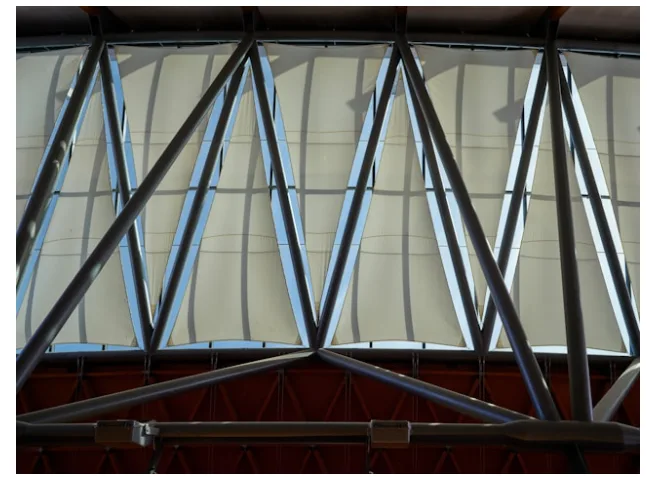Steel frame construction has become a dominant method in modern architecture and engineering due to its strength, durability, and versatility. Among the various types of steel framing methods, light steel frame structures and heavy steel frame structures stand out as the most commonly used. However, they differ significantly in terms of design, application, cost, and performance.
In this blog, we’ll explore the seven major differences between light and heavy steel frame structures, helping architects, builders, and developers choose the best fit for their specific construction needs.
1. Material Thickness and Weight
The most fundamental difference between light and heavy steel frames lies in the thickness and weight of the steel used.
- Light Steel Frames: Made from cold-formed galvanized steel sheets, light steel frames typically range between 0.5 mm to 2.5 mm in thickness. These materials are lightweight and easier to handle on-site.
- Heavy Steel Frames: Fabricated from hot-rolled steel sections, heavy steel frames are significantly thicker—often above 6 mm—and heavier. They are used in buildings where high load-bearing capacity is essential.
Conclusion: Light steel is thinner and lightweight, making it easier to transport and assemble, while heavy steel is thicker and ideal for supporting larger loads.
2. Construction Applications
The intended use of the structure greatly influences the choice between light and heavy steel frames.
- Light Steel Frames: These are commonly used in residential buildings, small offices, prefabricated homes, and low-rise structures. A light steel frame workshop is also a popular application due to the quick installation process and lower material costs.
- Heavy Steel Frames: Typically employed in skyscrapers, large commercial buildings, stadiums, and industrial facilities. Their ability to support larger spans and withstand extreme forces makes them the go-to option for massive structures.
Conclusion: Light steel is ideal for smaller and mid-sized projects, while heavy steel is essential for large-scale, high-load constructions.

3. Structural Strength and Load-Bearing Capacity
Strength is a key consideration in any construction project, and this is where heavy steel frames shine.
- Light Steel Frames: While strong enough for most residential and light commercial applications, they are limited in how much load they can carry, especially in multi-story structures or buildings with wide spans.
- Heavy Steel Frames: Known for superior structural integrity, heavy steel frames can support significant dead and live loads. Their robustness allows for the construction of buildings with more complex architectural designs and larger open spaces.
Conclusion: If the project requires high load-bearing capability, heavy steel is the better option.
4. Speed of Construction
The pace of construction can have a major impact on overall project timelines and costs.
- Light Steel Frames: These offer a faster and more efficient construction process. The prefabricated components can be quickly assembled on-site with minimal heavy machinery. This significantly reduces labor and project duration.
- Heavy Steel Frames: While still faster than traditional brick-and-mortar construction, heavy steel frames take more time to erect. The components are larger, heavier, and require cranes and skilled labor for installation.
Conclusion: For projects where time is a critical factor, light steel framing provides a clear advantage.
5. Cost of Materials and Construction
Cost-effectiveness is a major factor when selecting building materials, especially for budget-conscious projects.
- Light Steel Frames: Generally more affordable in terms of both material and labor. Their lightweight nature reduces transportation costs and eliminates the need for extensive foundations or heavy machinery.
- Heavy Steel Frames: More expensive due to the material thickness, manufacturing process, and equipment required for installation. However, in high-rise or high-load applications, their cost is justified by performance.
Conclusion: Light steel is more economical for small-to-medium scale projects, while heavy steel is cost-effective only when its strength is required.
6. Foundation Requirements
The type and size of the foundation directly relate to the weight and load of the structure above.
- Light Steel Frames: Being lightweight, they exert less pressure on the foundation, allowing for simpler and less expensive foundation designs. This makes them suitable for areas with weaker soil conditions or restricted excavation depths.
- Heavy Steel Frames: Require deep, robust foundations capable of handling immense loads. This often increases project costs and complexity, particularly in urban environments where space and soil quality may be constrained.
Conclusion: Light steel frames are more forgiving in terms of foundation needs, making them ideal for quicker and simpler projects.
7. Flexibility and Customization
Modern buildings often demand flexibility in design and the ability to make future modifications.
- Light Steel Frames: Offer high flexibility in design, especially for residential and modular buildings. They are easily customizable and can be altered without major structural changes.
- Heavy Steel Frames: Also provide design flexibility but modifications are more complex and costly due to the scale and weight of the components.
Conclusion: For dynamic and customizable structures, light steel frames offer easier adaptability, especially in modular construction environments.
Final Thoughts
Understanding the differences between light and heavy steel frame structures is essential for making the right decision in construction planning. Each type has its unique benefits, and the best choice depends on several factors including project size, budget, load requirements, and timeline.
| Feature | Light Steel Frame | Heavy Steel Frame |
| Thickness | 0.5 mm – 2.5 mm | 6 mm and above |
| Common Use Cases | Residential, modular, workshops | Skyscrapers, stadiums, bridges |
| Load-Bearing Capacity | Moderate | Very High |
| Construction Speed | Fast | Moderate |
| Cost | Lower overall | Higher but justified for big projects |
| Foundation Requirements | Minimal | Strong, deep foundations |
| Flexibility in Design | High | Moderate |
Whether you’re planning a light steel frame workshop or a high-rise office tower, the decision between light and heavy steel frame structures should be based on technical requirements, cost implications, and long-term performance goals. Consulting with a structural engineer can also help align your choice with the project’s functional and architectural needs.
Information contained on this page is provided by an independent third-party content provider. Binary News Network and this Site make no warranties or representations in connection therewith. If you are affiliated with this page and would like it removed please contact [email protected]



Comments